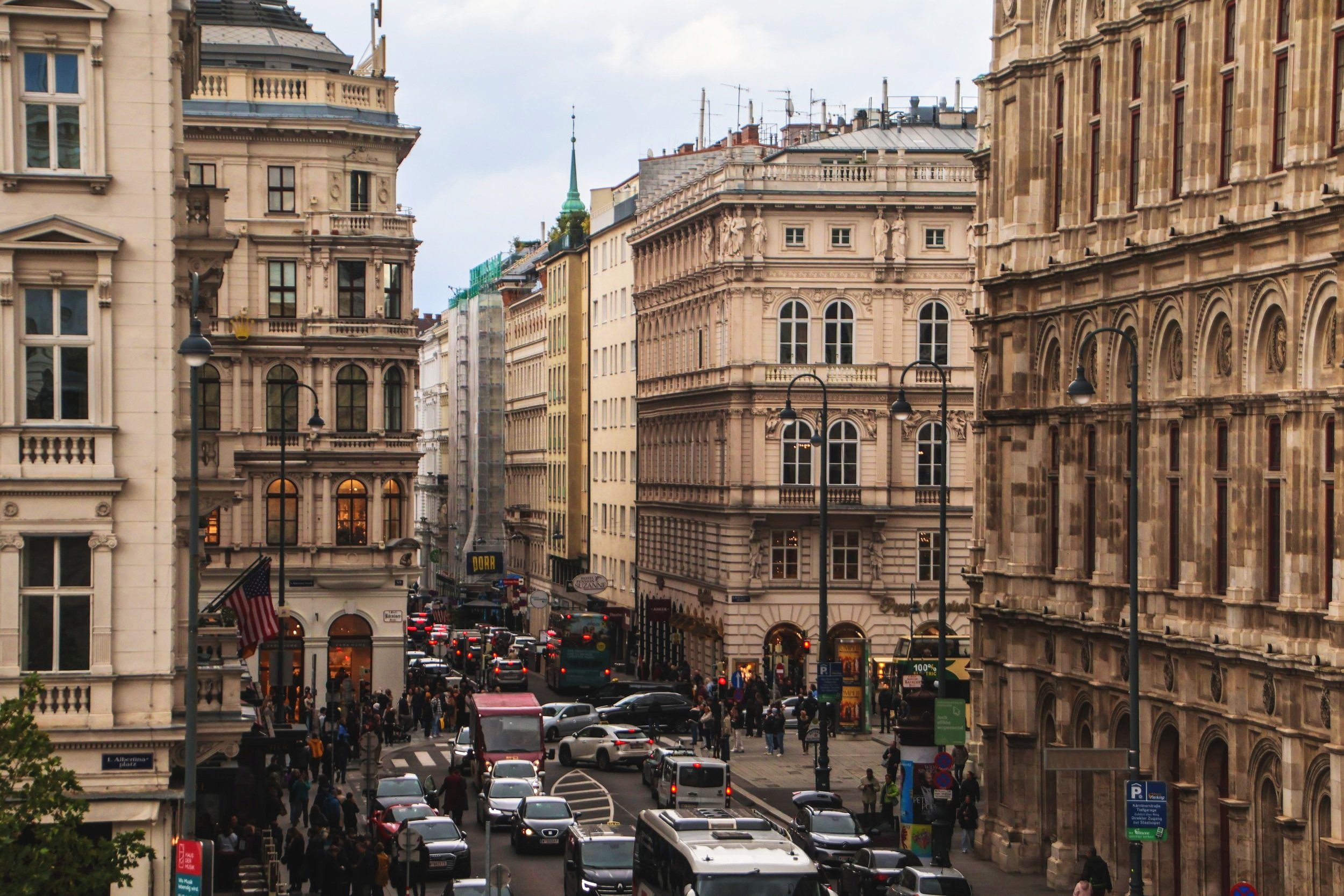Bath is a small town of about 94,000 people in the county of Somerset. By train, it is about 2 hours west of London, and it’s closely neighbored by Bristol and the Welsh border to the northwest. By all accounts, this is one of the most beloved and beautiful little towns in the South of England. There are lots of other sub-regions of the British Isles that I’m sure have lots of other beautiful towns… but in terms of day trips out of London, Bath is definitely in the top 3.
There is more to know about Bath of course—including the super un-creative way it got its name—but I’ll cover those details in due course. For now, here’s the map. You can enter into this place as uninformed as I was when my train rolled up one morning in late October.
Aix, like nearly everything in this part of the world, has a recorded history that stretches back well before the birth of Christ. Whenever I write these articles, I’ll always take a quick dive into the proverbial pool of history to see if there’s anything notable I should highlight… and in the case if Aix, I mostly came up empty-handed. In fact, the most interesting thing I dug up during my research—aside from the recent unearthing of a Roman amphitheater in a nearby suburb—was an interesting Medieval legend about a Dragon that supposedly sat on a nearby hill atop a pile of bones, both human and animal. This legend is interesting, because—although the presence of a Dragon cannot be confirmed—the pile of bones was known to be very real! It’s been the subject of numerous scientific inquiries to identify all of the original owners. There’s a really interesting article about this called “The Dragon at the bus-stop” that feels like it sets the scene quite well for a children’s fantasy novel.
So, with that in mind, the history of Aix feels relatively uncomplicated in my head. For all the history buffs, the history is there! But, for the rest of us, I don’t think you’re doing this place a huge disservice by just enjoying it for what it is now: a magical little place in the South of France.
There is a an urban offshoot of the nearby Danube River that snakes its way through urban Vienna where street artists have had a field day. This offshoot is called Donaukanal and you can actually walk along its banks for almost its entire 17 km length. I didn’t walk the entire length because, when you start to exit its super urban stretches, the murals start to be replaced with greenery (which is arguably much nicer than endless concrete and paint), but the stretches that I did cover were an absolute treasure trove of street art.
I’ve been forced to reference Vienna’s history books more than once now, but today is where we’re going to take a deep dive into those history books. And we’re going to do so with the aim of exploring one particular character in Vienna’s story: the House of Habsburg.
The House of Habsburg is one of the most important dynasties in European history. Their origins are bit murky, but their collective ascent to nobility as a family can be traced all the way back to the 900s. They were lords controlling patches of territory in central Europe who—over the course of generations—fought their way to the very top. Starting in 1440 when they were at the helm of the Holy Roman Empire, the Habsburgs were in control of major world powers until the early 1900s.
Growing up, before I really started to get obsessed with maps and traveling, I always had a vague awareness of Vienna—not because of its geopolitical significance, or because it was the capital of an important European country—but because of the arts. In this article, we’re going to jump head-first into the world of classical art and culture that has become a calling-card for Vienna. I definitely did not have time to do everything that this city has to offer, but I was able to make the most of the time I did have thanks to my man on the inside.
Vienna. It has got a reputation for being one of the most beautiful and most “livable” cities not just in Europe, but in the whole world. And that reputation is very well-deserved! But to me, the geopolitical angle is much more interesting that the generic wiki-tourism preamble. So, why am I saying that Vienna is the “Spy Capital of the World”? Well, I can’t take credit for this designation; it’s a “thing.” If you look it up on YouTube, you’ll find all sorts of interesting explainer videos on this (here’s a good one from Versed). I actually think this is a really good segue into explaining Vienna as it stands today, so here’s the quick version…
Similar to my sentiments about the street art I found in Naples, I think the street art of Paris feels quite unique in the context of the murals I’ve seen overall. Indeed, these pieces of art like there were directly inspired by and connected to the city around them—which is not always the case! In North America—where there are some incredible works of art tucked away down alleyways in cities like Toronto or San Francisco—the artistry can weirdly begin to blend together after a few cities. Perhaps this is a symptom of the cultural homogeneity of the continent at large, or maybe I’m just looking for meaning in a place where this none to be found… but the murals I saw in Paris definitely felt like they belonged here.
Tonight is not a regular season match! No; this is UEFA Champions League (UCL). If you are not familiar, UCL is where to top placing teams from the domestic leagues all around Europe play against each other. So, for example, Arsenal plays in the English Premiere League, while Juventus plays in Italian Serie A. These are two famous clubs that would never play against each other during regular season play. The only place where you see international cross-over is UCL, and that is why it’s one of the coolest things in sports! Only the best teams from each domestic league will qualify, and the exact number of teams that make it into UCL from each domestic league depends on how good that league is. So, for example, in Ligue 1 (France) the top 3 teams qualify for the next season of UCL, where as La Liga (Spain) it’s the top 4 teams. This is because La Liga is more competitive than Ligue 1. How “competitiveness” is measured is subject to some controversy… but that’s the gist of it.
So this is a Champions League match, and PSG are up against the Spanish side Girona, who came out of nowhere to finish 3rd in their 2023/2024 campaign, behind only Barça and Real Madrid. Let’s do this!
During the 2024 Summer Olympics, it just so happened that I was living in Paris. Cool, right? Well, not if you asked any Parisian at the time. I love them, but they can be quite a negative bunch, and this proved especially true when it came to the Olympics. In anticipation of the games, they fled the city like an enemy force was about to invade. As a newly minted resident of Paris, I too took on this negative attitude, seemingly by osmosis. Maybe I just wanted to be included. 😂
THANK GOD I snapped out of that funk and bought some tickets! I attended 3 events at the 2024 Olympics, and it was one of the coolest experiences I’ve ever had.
Located on the right (north) bank of the Seine in the center of the Paris, the Louvre is, perhaps, the most famous museum on planet earth. But it didn’t always serve this function. Originally, when it was originally constructed all the way back in 1100s, it was actually a fortress. I mean a true Medieval castle, like you see in the movies, complete with turrets and a big moat around it. Eventually, as the urban footprint of Paris began to expand, this castle transition from a military installation to a palace for the French royals. I am really resisting the urge to jump down a history worm-hole here, so but to summarize centuries of history into a a few lines… the physical structure that was this castle was altered many times for many reasons through history. In the late 1600s, when King Louis XIV relocated to the Palace of Versailles, the Louvre was repurposed to house his extensive art collection… and things have evolved from there. It was first opened to the public in 1793 with a mere 537 paintings, and that number has now grown to include a breath-taking 500,000 objects, which collectively attract almost 9 million visitors per year, making it the most visited museum in the world.











